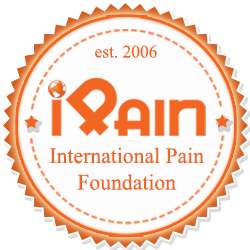Every other person suffers from pain time to time, right? Acute body pain is quite normal to experience as it is an automatic reaction of your nervous system to caution you in case of a possible damage or injury. When any part of your body is injured, the pain signals are transmitted directly from the specific injured area your brain through the spinal cord. With time, the feelings of pain tend to decrease as the wound or injury begins to heal. So, acute pain is pretty normal, then.
What is the difference between acute and chronic pain?
Contrary to the general perception, there is a major difference between chronic and acute pain. In chronic pain, your brain keeps on receiving pain signals even after an injury is fully healed. In fact, chronic pain can last for months or even years. Numerous studies suggests patients suffering from chronic pain may have ADD (attention-deficit disorder) which can be diagnosed with an adult add test.
Chronic pain can affect your body’s flexibility and mobility, overall strength or endurance. This can be a cause for concern as chronic pain makes it hard for people to perform their day to day activities, especially those who have crossed their thirties.
How long does chronic pain last?
By definition, it is referred to any pain that lasts for more than 12 weeks. Some people find the pain to be dull, while some even experience a sharp burning sensation as well. It can be an ongoing pain or intermittent. This type of pain can affect any area of a person’s body. However, the intensity of pain may vary from person to person.
Examples of chronic pain
Following are some of the common examples of chronic pain you need to watch out for:
- migraine or headache
- after surgery or post trauma pain
- back pain
- chemotherapy pain
- arthritis or joint pain
- fibromyalgia
- psychogenic or stress induced pain
According to the (AAPM) American Academy of Pain Medicine, around one billion people across the globe suffer from chronic pain. In fact, it affects around 100 million US citizens every year.
What are the causes and classifications of chronic pain?
The different causes and classifications of chronic pain are explained below:
- Myalgic encephalomyelitis/chronic fatigue syndrome: A person diagnosed with ME or CFS suffers through a prolonged weariness and body pain
- Endometriosis: Endometriosis occurs when endometrial tissue starts to grow in other places in the body such as the ovaries and the bowel.
- Fibromyalgia: Fibromyalgia refers to musculoskeletal pain which causes extreme fatigue, sleep, and memory issues.
- IBD (Inflammatory bowel disease): IBD refers to chronic inflammation and sores inside the colon and digestive tract.
- Interstitial cystitis: Interstitial cystitisc is a chronic illness which causes chronic pain in the bladder and pelvic area. The intensity of the pain varies from person to person.
- TMJ (Temporomandibular joint syndrome): It is characterized as a dull or sharp pain and tenderness in the jaw joint.
What is more, chronic pain should not necessarily affect seniors only. That is right! In fact, it can be experienced by young adults as well. Apart from old age, one may suffer from chronic pain due to the following factors:
- getting injured
- post surgery conditions
- obesity
- an accident or mishap
- Diabetic neuropathy
Getting treatment to reduce symptoms of chronic pain
The primary goal of getting treatment is to minimize pain and improve mobility. This will help people suffering from chronic pain to follow their daily routine without any problems or discomfort.
The intensity of pain, however, differs from person to person. Therefore, physicians develop customized pain management programs based as per the needs of their patients.
A pain management program is developed according to the symptoms as well as the overall health and fitness levels of the patient. Medical treatments, physiotherapy, herbal treatment, changes in diet and meditation can be used to reduce the intensity of chronic pain.
Medications used for reducing chronic pain
Several medications such as opioid pain relievers, OTC painkillers, anti-inflammatory drugs (NSAIDs), Kratom, CBD, and adjutant analgesics can be used to treat the symptoms of chronic pain. However, they should not be taken for a long period of time as pain-relievers cause long-term harm in people such as chronic constipation and kidney damage.
To wrap up
At times the symptoms of chronic pain can be increased by excessive mental stress and tension. Therefore, it is equally important for people suffering from chronic pain to take care of their mental health.
Although, chronic pain cannot be completely cured, however, its symptoms can be controlled and reduced by following an effective pain management plan.
By Hassan Khan

